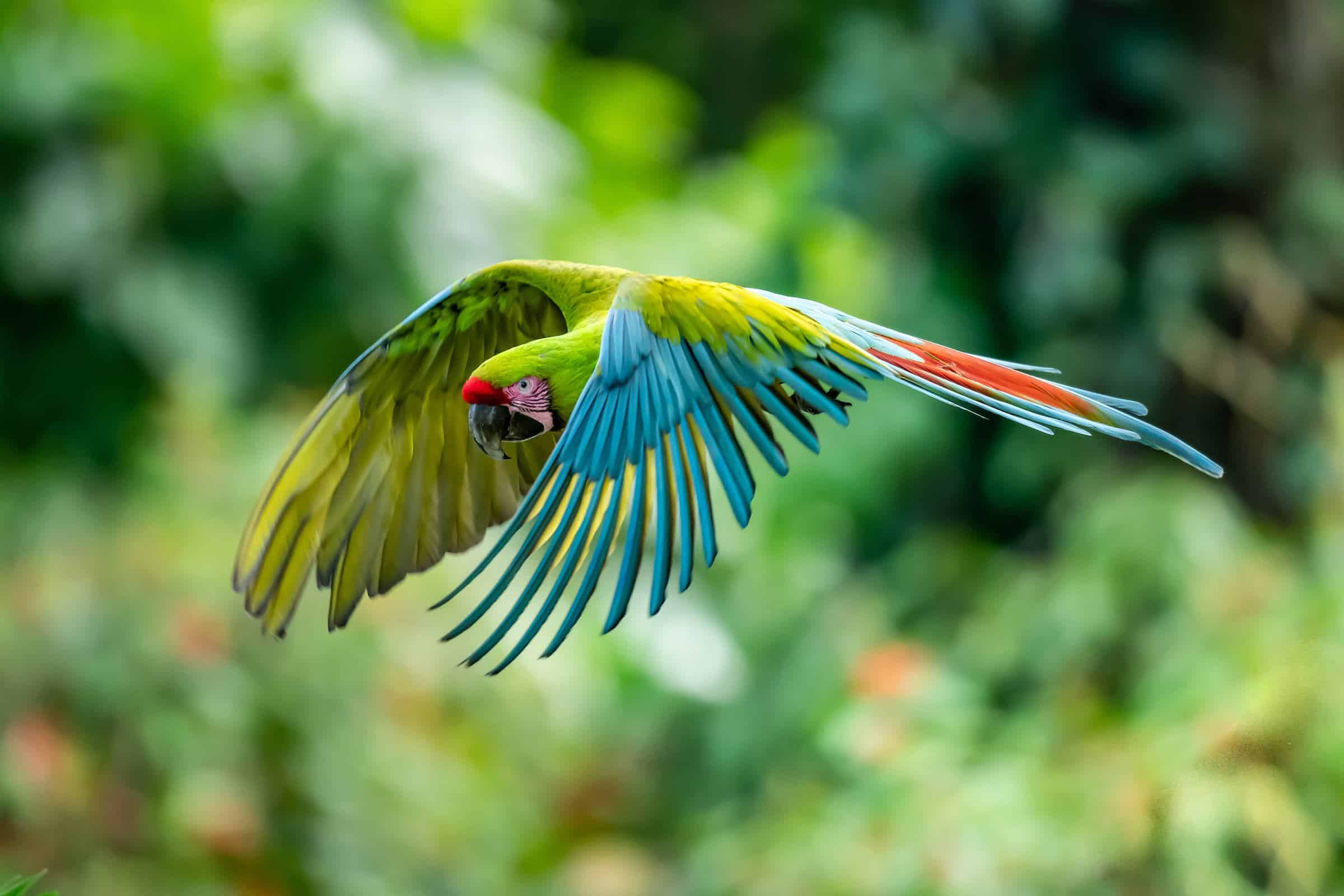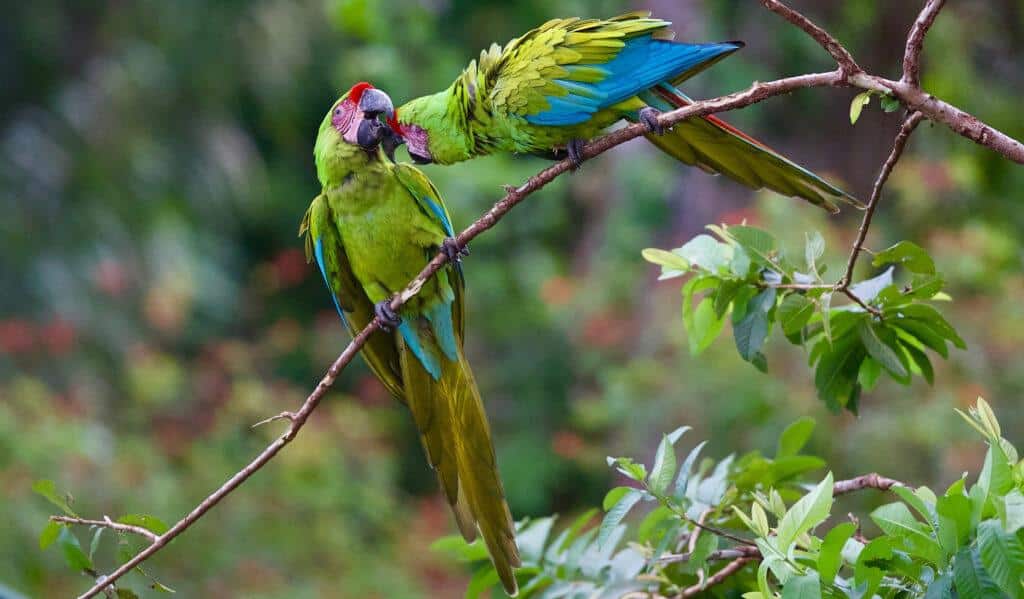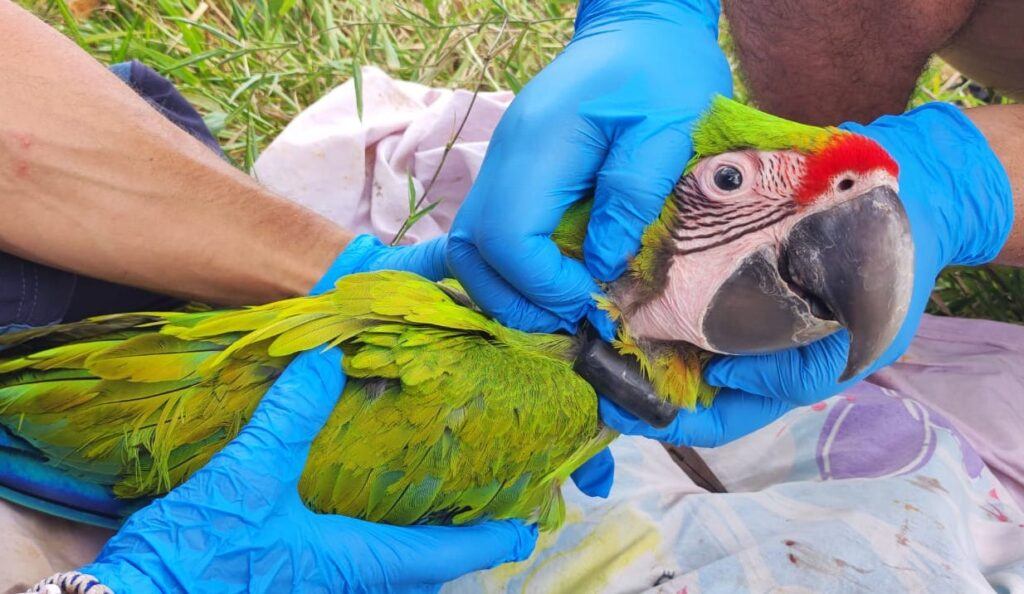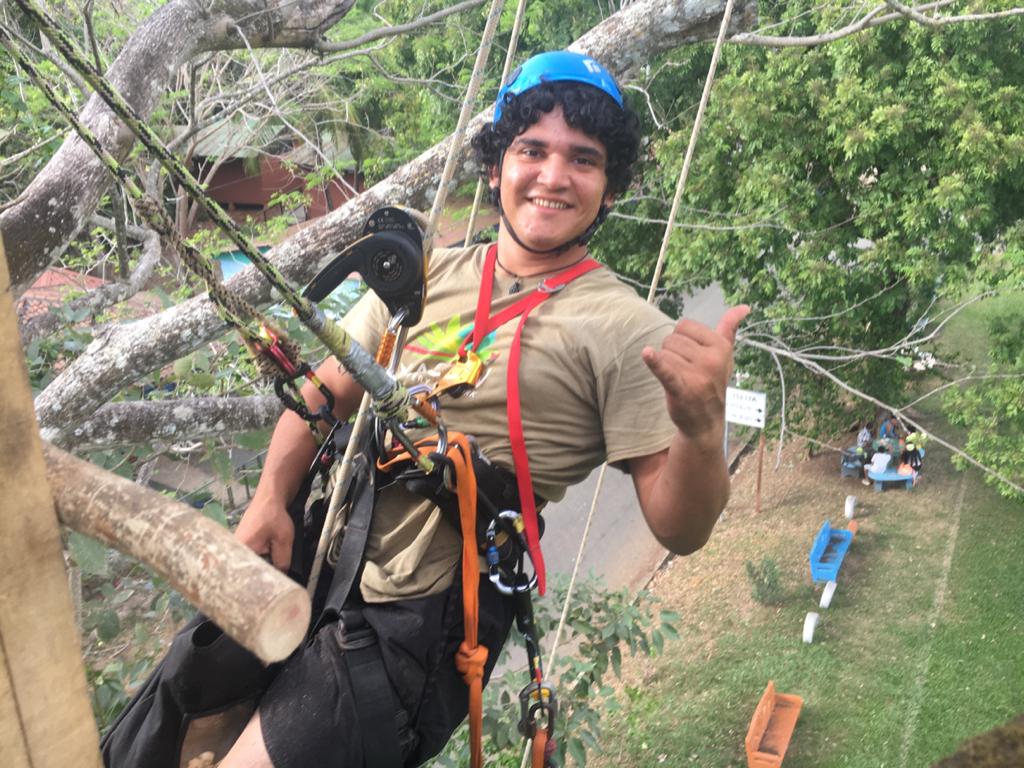Mario’s harness released a pained creak as he climbed one of Costa Rica’s towering mountain almond trees. Dangling 130 feet above the forest floor, he peered into a tree cavity and found two pinkish chicks, bald except for sporadic fuzz. As the Great Green Macaw Field Leader for the Macaw Recovery Network (MRN), one of WCN’s newest Conservation Partners, Mario Jiménez regularly scales trees in search of macaw nests. Together with his team of volunteers, he was carrying out a study to track young macaw movements and analyze their genetics to find what might be preventing them from flourishing in the wild.
Great green macaws have been declining for years throughout Central and South America, falling below 1,000 individuals. Habitat loss is the primary threat inching them closer to extinction, and although MRN has recorded 18 nests with 36 chicks this year—high numbers for this Critically Endangered species—Costa Rica’s wild great green macaw population has not been growing much over time. MRN’s 2021 census recorded nearly 340 great green macaws in Costa Rica, including plenty of chicks and fledglings, but it’s unclear why this hasn’t translated into significant population growth this year. Once the birds leave their nests, they seemingly fail to reach adulthood, fail to breed, or vanish entirely.
To determine what’s happening, Mario’s team spent this breeding season scouring over 460 sq. miles—nearly the size of Los Angeles—of dense forest for as many nests as possible. Once found, MRN fitted the chicks with lightweight radio collars, which will track each bird’s movements once they leave the nest. This is the first time MRN has ever used collars to track macaws. Data from these chicks will tell Mario if these macaws are venturing out with their parents, how far they travel in their first weeks, and if they’re wandering into dangerous areas. While deforestation is an ongoing threat, it alone can’t be responsible for this stymied population growth. Mario is hopeful that his telemetry project will shed light on this mystery and help MRN reassess conservation strategies.
In addition to collaring the chicks, Mario also carefully collects their blood samples for a first-ever genetic study of great green macaws. The results will reveal any undiscovered health issues that are hindering the survival of new adults. It’s important to catch such threats within a small population’s genetics before they spread, so these samples are tested in a lab while Mario’s team tracks the macaws in the field. If any diseases or maladaptive traits are becoming prominent within the great green macaw gene pool, MRN will decide how to best address them.
As he peeked into the almond tree nest and saw the chicks blinking back at him, Mario felt determined to solve this population problem. Breeding season was winding down, making these some of the last chicks to participate in MRN’s landmark study. Through methods never-before-used on macaws, MRN is confident that they can uncover what is blocking great green macaws from increasing in the wild and improve their chances at recovery, so that next year’s nests will contain more tiny eyes staring back at Mario.
Support Macaw Recovery Network




2 Comments